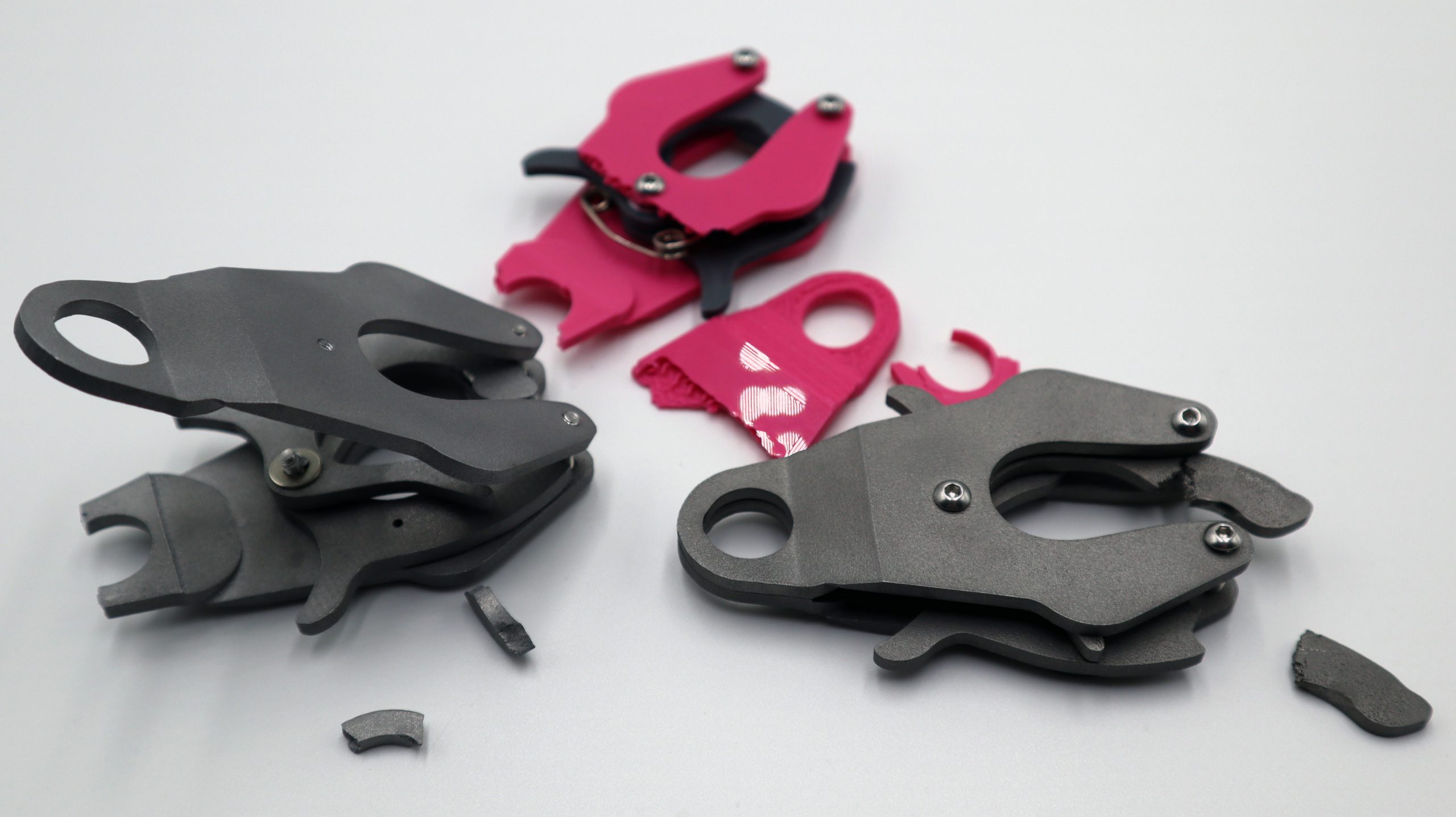Thanks to PCBWay for providing specialist 3D printing services for this project.
A little while back I designed a 3D printed snap close connector that I printed in regular, old PLA plus from 3DFillies and some of you wanted to know just how strong it was – me too! But I also wanted to find out how strong the design could be if it was 3D printed in metal (like the Frog clip that the design is based on). But I certainly don’t have a 3D printer capable of printing metal. This is where PCBWay comes into the story. They’re known for their printed circuit board service, but they’ve also diversified into CNC and 3D printing. They were kind enough to provide me with aluminium (AlSi10Mg) and stainless steel (316L) 3D printing services. Using their selective laser melting (SLM) 3D printers they printed some high quality, snap close connector parts for me. These parts are really beautiful to look at and have a special, weighty feel in the hand that you just don’t get from plastic. Now, 3D printing metal is kind of costly, so you don’t tend to see too many tests that involve destroying the parts. But, I wasn’t going to let that stop me from busting some metal!

You may have seen tensile testing set-ups online. Those machines that pull sample parts until they break and record the force along the way. Laboratory grade equipment was way beyond my reach, which meant that I had to cobble something together myself. I’ve seen examples that use stepper motors and lead screws, etc., but there is no way they would be strong enough to break metal. I figured that I would need around 500 kg of tensile strength to break the parts (best guess), so I designed a 1 tonne test rig just to be safe. You can check the design out at Thangs.com. The ‘Print Buster 3000’ is constructed from mild steel and is held together entirely with bolts (I wasn’t going to put my poor welding skills up against 1 tonne!). A 10 tonne hydraulic bottle jack provides the lifting action (chosen primarily for its high lift) and a 1 tonne digital crane scale does the measuring. I tested the contraption on some household items and everything was working as it should.

My snap close connector test subjects were printed from:
- PLA plus printed in my workshop
- Aluminium (AlSi10Mg) printed by PCBWay
- Stainless steel (316L) printed by PCBWay

You can watch the video below to see the full results, but here is a summary. The PLA plus catastrophically failed at just under 100 kg – not bad for plastic and not unexpected. The aluminium fared much better at over 800 kg! Lucky I built my test rig tough! And the hands down winner was stainless steel that handled a whopping 900 kg tensile weight. That is pretty impressive for small, additive manufactured parts. Would I recommend that you print parts out of metal for rock climbing? Hell no! But SLM metal printing certainly has its place where you need a combination of strength and efficiency in complex shapes. I know I’d love to get my hands on some titanium and tool steel prints to check their strength out too. But what I’d really love to do is print some amazing small pieces like custom meeples for board games (think Monopoly tokens, but cooler). I definitely won’t destroy those though!
